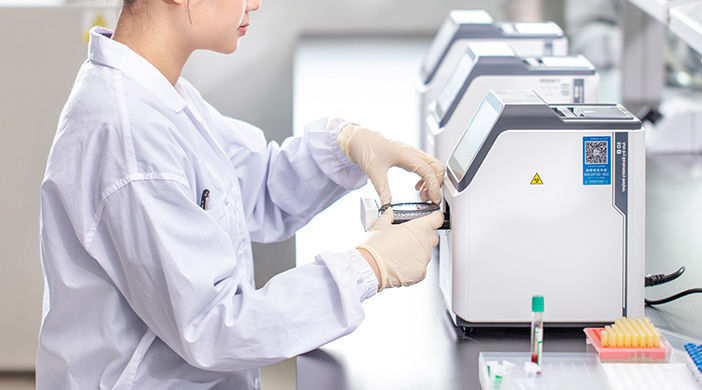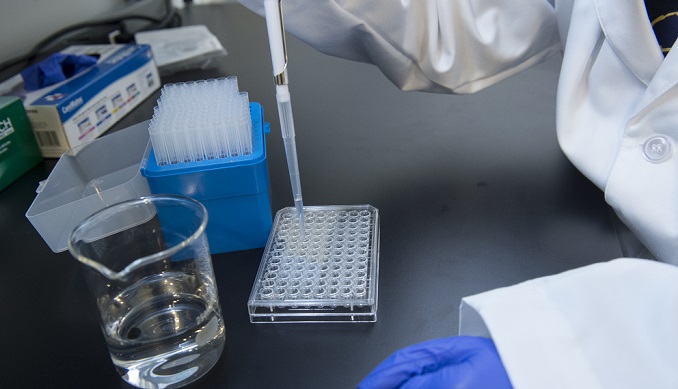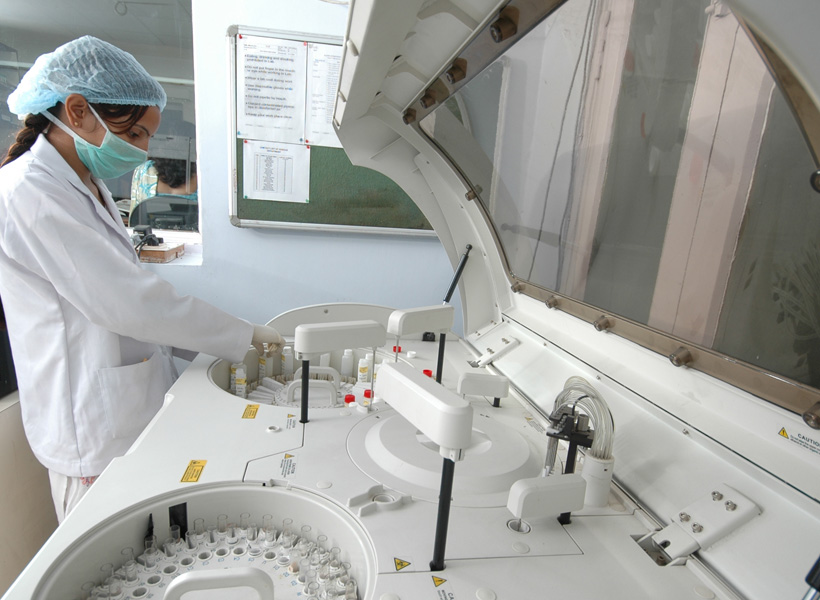Introduction
In clinical medicine, liver function tests and kidney function tests are inseparable from biochemical analyzers. It can not only help doctors make a diagnosis and predict whether the human body is healthy, but also play an important role in disease research and medical education.This article aims to explore the various aspects of the clinical applications of biochemical analyzers, including their role in disease diagnosis, treatment monitoring, and overall patient management.The discussion encompasses the key features, advantages, and limitations of these instruments, highlighting their significance in the field of healthcare.
Discuss The Application In The Pathogenesis Of Diseases
The understanding and effective treatment of human diseases are basic theories and basic skills that medical scientists must master. Clinical biochemistry studies the biochemical reactions and metabolic abnormalities in the human body during the disease process from the molecular and functional levels, which is helpful to understand the pathogenesis of the disease in essence. On the one hand, clinical biochemical research has clarified certain characteristics of health and disease, and on the other hand, research on the diversity of health and disease has opened up a new field of clinical biochemical research.
Application In Clinical Disease Diagnosis And Treatment
At present, it is believed that the main causes of diseases include physiological factors, chemical factors, biological factors, genetic variation, immune response, nutritional disorders and endocrine disorders. Among many factors, for a certain disease, only one or more factors may play a role, which factors work, and which adverse effects lead to the occurrence of the disease. The test results of the biochemical analyzer are expected to give a satisfactory result. answer.
Clinical biochemical tests and experimental data are mainly used in the following aspects: ① reveal the basic causes and mechanisms of diseases; ② suggest reasonable treatments according to the pathogenesis; ③ diagnose specific diseases; ④ provide screening tests for early diagnosis of certain diseases; ⑤Monitor the improvement, deterioration, remission or recurrence of the disease; ⑥Therapeutic drug monitoring, that is, adjust the dose according to the drug concentration in blood and other body fluids to ensure the effectiveness and safety of drug treatment; ⑦Auxiliary evaluation of treatment effect; ⑧ Prenatal diagnosis of genetic diseases can reduce the incidence of birth defects.

The Role Of Medical Education
The test of biochemical analyzer is not only the basic theory and basic technology courses that students majoring in medical laboratory must master, but also is indispensable in the knowledge structure of students majoring in other clinical medicine and preventive medicine.
The development path of biochemical analyzer is spectrophotometer-semi-automatic biochemical analyzer-automatic biochemical analyzer, and since the world’s first fully automatic biochemical analyzer appeared in 1957, fully automatic biochemical analyzers of various models and functions Biochemical analyzers continue to emerge, providing important help for clinical biochemical tests. The meanings represented by some parameters of liver function biochemical analysis are as follows:
1. Alanine aminotransferase (ALT)
Alanine aminotransferase, mainly found in the liver, heart and skeletal muscle. Liver cells or some tissue damage or necrosis will increase the alanine aminotransferase in the blood. There are many clinical diseases that can cause abnormal transaminase. Viral hepatitis is the most common disease that causes the increase of transaminase. Various acute and chronic viral diseases Hepatitis can lead to elevated transaminases.
2.Aspartate Aminotransferase (AST)
Also known as aspartate aminotransferase. It is an indicator of liver function tests in clinical medicine, and is used to judge whether the liver is damaged. Clinically, if the course of hepatitis B is too long, the degree of chronicity is high, the damage of liver cell parenchyma is severe, and the prognosis is poor, it usually shows that the aspartate aminotransferase is relatively high, and the alanine aminotransferase/aspartate aminotransferase is less than 1.0. It is also possible for healthy individuals to have aspartate aminotransferase levels temporarily outside the normal range. Strenuous exercise, overwork, or a recent greasy meal can temporarily increase aspartate aminotransferase.
3.Ratio of alanine aminotransferase/aspartate aminotransferase
Aspartate aminotransferase and alanine aminotransferase are two enzymes to measure the degree of liver cell damage, and the ratio of AST/ALT is commonly used clinically to reflect the damage of liver cells. In liver disease, AST/ALT ratio <1 often indicates mild liver damage, while AST/ALT ratio >1 indicates severe liver damage. It is meaningless if only this ratio is biased and the range of the two enzymes is normal.
4.γ-glutamyl transpeptidase
γ-Glutamyl transpeptidase (γ-GT) is widely distributed in human tissues, with the most in the kidney, followed by the pancreas and liver, and the most in the liver during the embryonic period, and it is mainly distributed in the liver cytoplasm and liver In the bile duct epithelium, the γ-GT in normal human serum mainly comes from the liver. This enzyme is only mildly to moderately elevated in acute hepatitis, chronic active hepatitis, and decompensated cirrhosis. Obstructive jaundice significantly increased, even up to 10 times normal.

5.Alkaline phosphatase
Alkaline phosphatase is widely distributed in various organs of the human body, among which the liver is the most, followed by the kidney, bones, intestines, and placenta and other tissues. When the liver is damaged or obstructed, it enters the blood through the lymphatic channel and hepatic sinusoids, and at the same time, due to the obstruction of bile excretion in the intrahepatic biliary tract, it flows back into the blood and causes a significant increase in serum alkaline phosphatase.
6.Total protein
Increase: mainly due to the decrease of water in the serum, which makes the total protein concentration relatively increase, such as hemoconcentration and multiple myeloma caused by high degree of dehydration.
Decrease: The water and sodium retention caused by various reasons causes the plasma to be diluted, or the total protein in the plasma decreases due to excessive intravenous injection of hypotonic solution.
7.Albumin
It is synthesized by hepatic parenchymal cells. Under normal circumstances, the increase of albumin is mainly seen in the relative increase caused by blood concentration, such as severe dehydration and shock, severe burns, acute bleeding, and chronic adrenal insufficiency. Decreased albumin is common in liver cirrhosis with ascites and other severe damage to liver function, malnutrition, chronic wasting disease, diabetes, severe hemorrhagic nephrotic syndrome, etc.
8.Globulin
Low globulin is generally due to physiological reasons, such as malnutrition, insufficient protein intake, or the body’s poor ability to absorb foreign proteins, and anemia can also cause low globulin. High globulin levels are often used in the diagnosis of liver diseases, such as chronic hepatitis B, alcoholic liver, and cirrhosis in liver diseases, which can all cause high globulin levels.
9.White ball ratio
Clinically, the white globule ratio value is often used as an indicator for observing the course of liver diseases such as cirrhosis, and to judge the severity of liver diseases. Common causes of low white blood cell ratio include acute and chronic hepatitis B, autoimmune diseases, kidney disease, and multiple myeloma, all of which can cause low white blood cell ratio.

Conclusion
In conclusion, biochemical analyzers have revolutionized clinical diagnostics, enabling healthcare professionals to obtain vital information for accurate disease diagnosis and effective treatment monitoring.With ongoing advancements in technology, these instruments continue to play a crucial role in improving patient care and outcomes.
Why Choose Us?

CNMEDITECH is dedicated to the long-term research of the biochemical analyzer market. Our mission is “People oriented and win-win strategy,Matching the real needs of the region with a focus on human health,To be the world’s first-class medical field solution expert”. We have been manufacturing high-quality medical device products for more than ten years.
We have built our reputation on delivering quality healthcare solutions on time and on budget. All our products comply with international health and safety regulations and all products come with a warranty.
Are you still worrying about your customer’s product needs? Are you still angry that the product is expensive?Our biochemical analyzers have various models and support personalized product customization.
Our company has many styles to choose from. In addition, we have high-quality pre-sales consulting guidance and professional after-sales service, all to meet your needs.
Whether it is a cost-effective or high-end product, there will always be something suitable for you. If you have any needs for products, you can ask us, our factory will meet your needs as soon as possible, and we will make every effort to provide you with solutions.Feel free to send us your inquiries.
